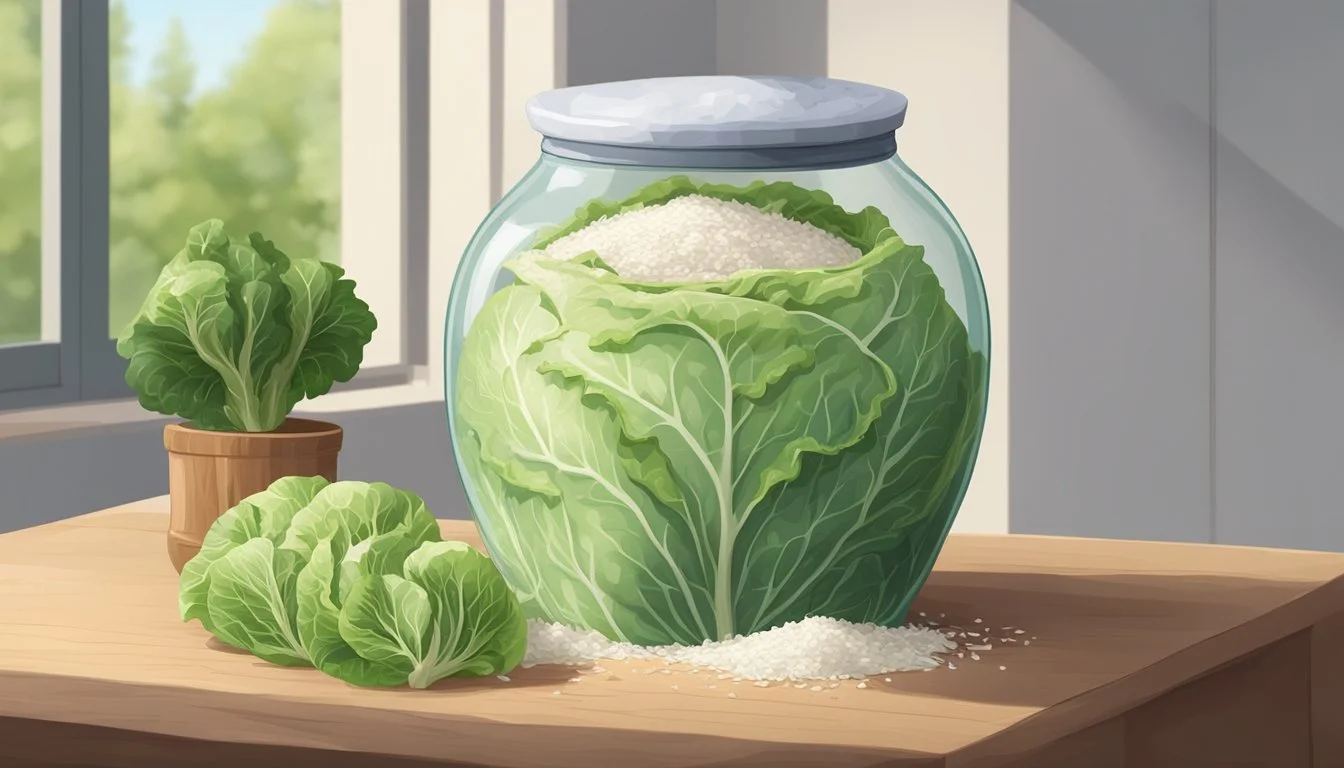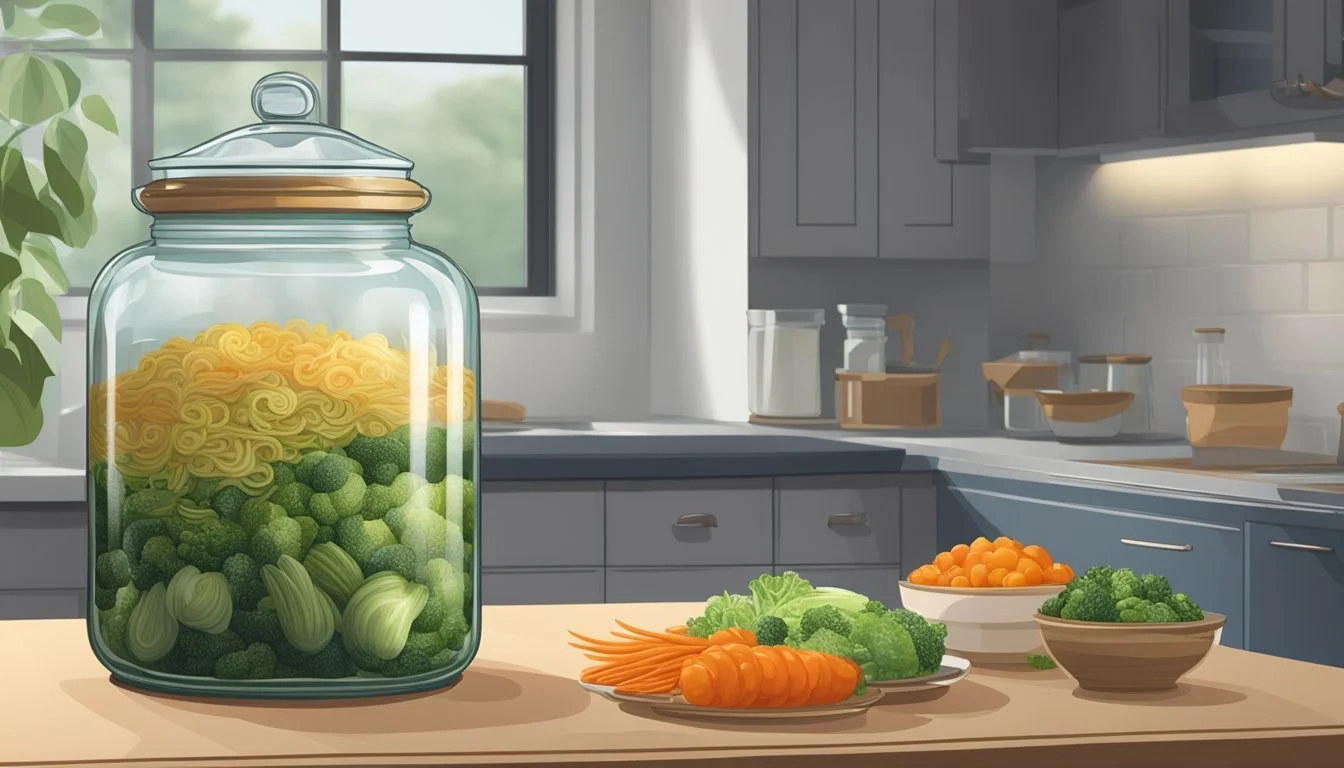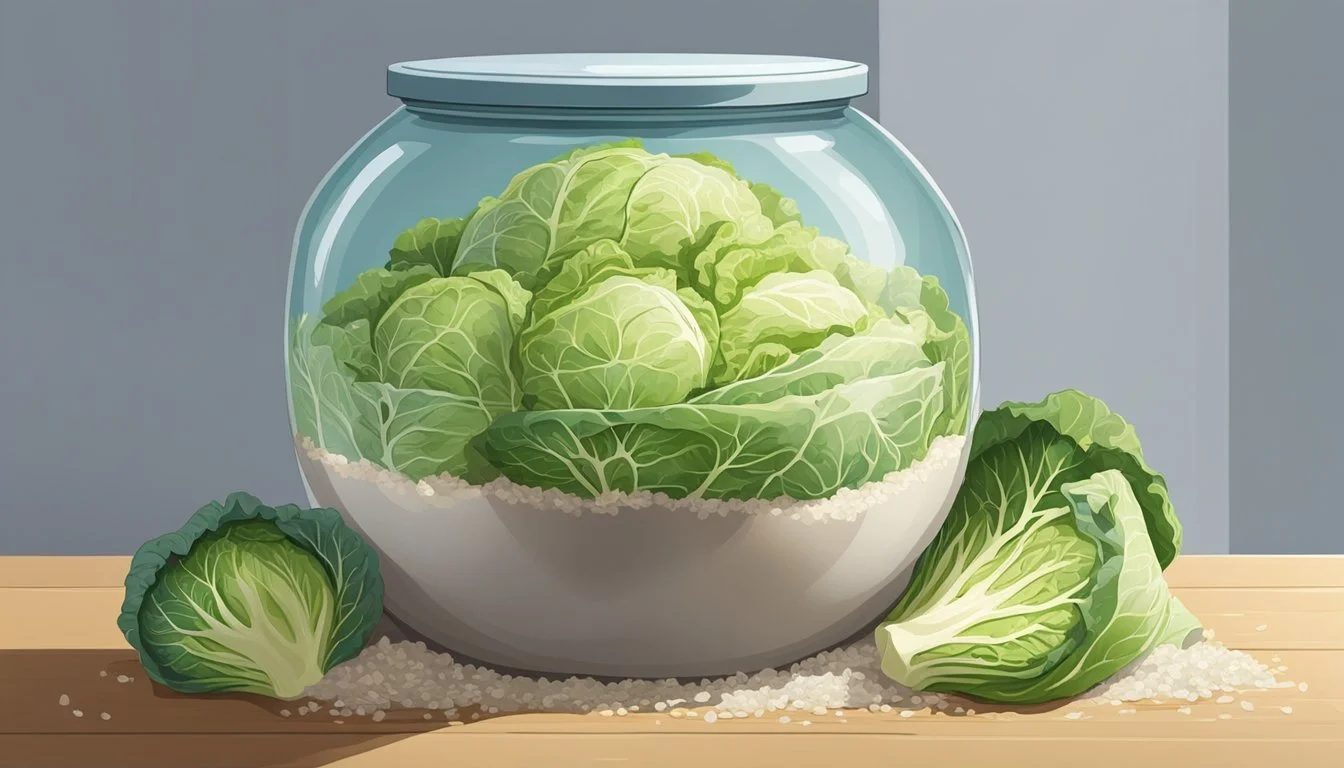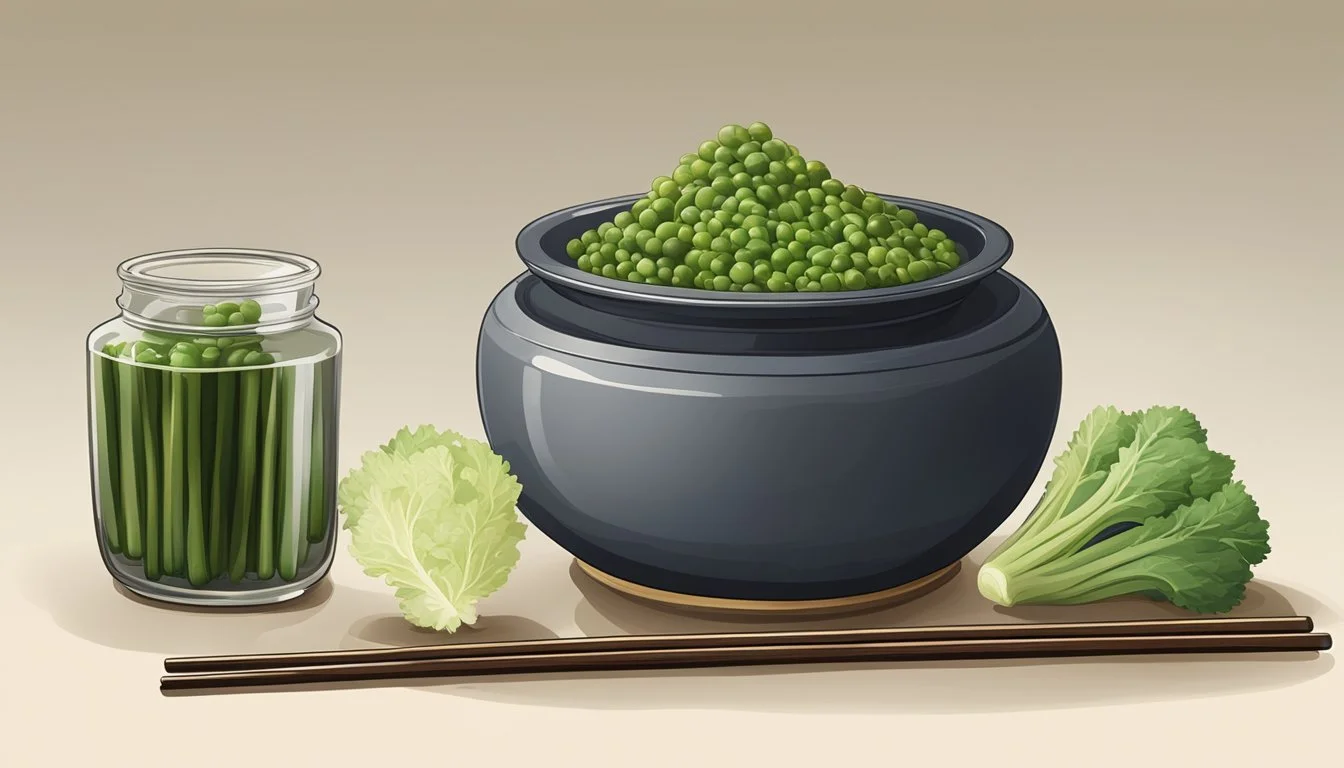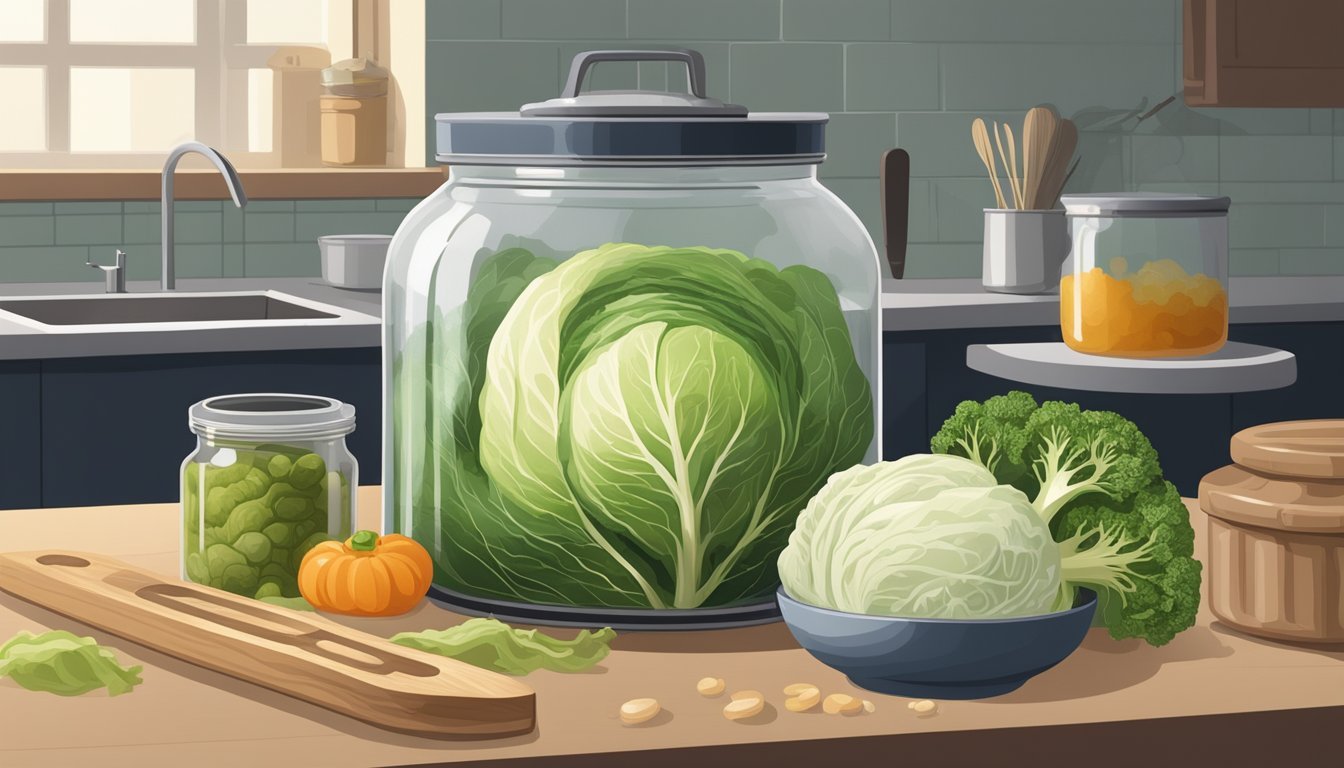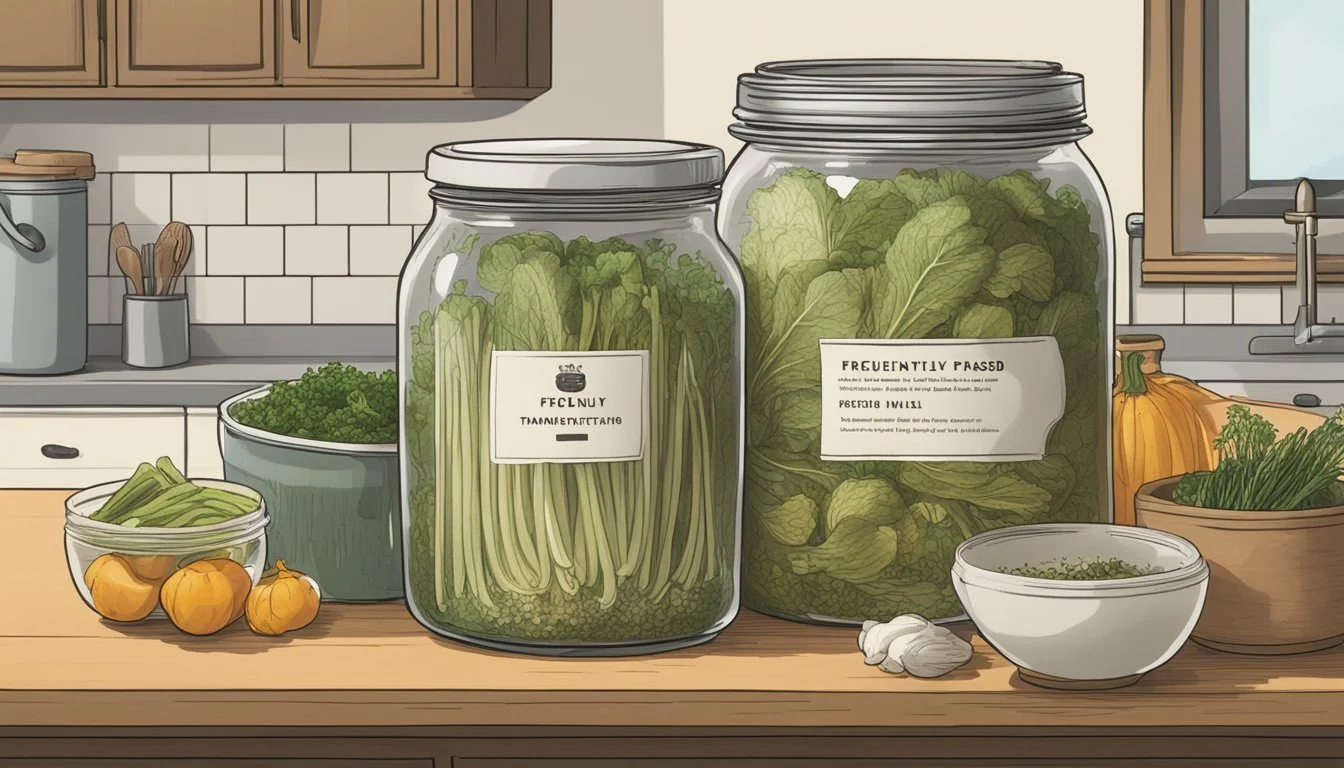How to Ferment Tianjin Preserved Vegetable
A Step-by-Step Guide to Chinese Fermented Cabbage
Tianjin preserved vegetable, a prized traditional delicacy from northern China, is a prime example of the ancient art of fermentation. This pickled Bok choy variant, known as Tianjin winter vegetable or Dongcai, brings a unique flavor to a variety of Chinese dishes. Fermentation, a method used for centuries to preserve and enhance the flavors of food, transforms the Tianjin cabbage into a savory, salty, and slightly tangy ingredient. Its texture and taste characteristics make it an essential component in many regional recipes, adding depth and complexity to meals.
Preparation of Tianjin preserved vegetable begins with the careful selection of napa cabbage, specifically the slender Tianjin variety. The meticulously sun-dried leaves are then finely chopped and mixed with salt, and occasionally garlic, to begin the fermentation process. Stored in earthenware pots, the mixture undergoes a transformative phase, developing its distinct aroma and flavor profile that sets it apart from other fermented foods, like sauerkraut.
The versatility of Tianjin preserved vegetable is notable, as it can be incorporated into a range of Chinese dishes. From steamed pork patties to hearty stews, the preserved vegetable imparts a unique essence that is both traditional and irreplaceable in the cuisine. Its preparation, while simple in technique, requires patience and attention to detail, ensuring that the desired flavor and texture are achieved through the fermentation process.
History and Cultural Significance
Tianjin preserved vegetable holds a cherished place in Chinese culinary traditions, representing both historical ingenuity and cultural heritage.
Origin in Tianjin
Tianjin preserved vegetable, also locally known as Tianjin Winter Vegetable, traces its roots to the region of Tianjin in Northern China. This unique type of Chinese Pickle is made primarily from a variety of bok choy known as arrow-shaft cabbage. It is traditionally prepared by finely chopping the vegetable, salting it, and allowing it to ferment in a precise, age-old technique developed in Tianjin.
Usage in Chinese Cuisine
In Chinese cuisine, these preserved vegetables are celebrated for their versatility and depth of flavor. They can be utilized in a myriad of dishes, adding a distinct tartness and crunch. Often incorporated into stir-fries, rice dishes, and as a condiment, the Tianjin preserved vegetable is synonymous with the authentic taste of Northern Chinese fare. With its longevity in Chinese food (What wine goes well with Chinese food?) culture, it exhibits the resourceful spirit of preserving seasonal bounty for year-round enjoyment.
Ingredients and Preparation
To produce authentic Tianjin preserved vegetables, one must pay attention to the selection of ingredients and follow a meticulous preparation process. The correct type of cabbage and the quality of salt and spices are crucial factors in achieving the desired flavor and texture in the final fermented product.
Selecting the Right Cabbage
The ideal cabbage for Tianjin preserved vegetable is the Tianjin cabbage, a thinner and more slender variety of napa cabbage sourced from the Tianjin region. This type of cabbage is specifically chosen for its ability to absorb flavors and ferment well. It is essential that the cabbage is fresh and clean, with no signs of wilting or discoloration.
Preparing the Vegetables for Fermentation
The process begins by sundrying the cabbage to reduce moisture content, which helps in the fermentation process. Once dried, the cabbage leaves are then cut into thin strips. These strips are then mixed thoroughly with salt—preferably sea salt due to its natural minerals—and often with additional ingredients such as garlic and ginger to enhance the flavor. The mixture is then placed in a clean, airtight jar or traditional earthenware pots.
Choosing the Right Salt and Spices
Using high-quality sea salt is key to the fermentation process as it inhibits the growth of unwanted bacteria while allowing beneficial lactobacilli to thrive. The ratio of salt to vegetables is critical and must be measured with precision. For spices, a common addition is Sichuan peppercorns, which impart a unique numbing sensation to the preserved vegetables. Other spices may be included based on regional and personal preferences, but the emphasis is always on maintaining a balance that complements the natural flavor of the cabbage.
Fermentation Process
The art of fermenting Tianjin preserved vegetable relies on crafting an optimal environment for beneficial bacteria to thrive, meticulously timing the process, and managing common challenges like mold and odors.
Creating the Fermentation Environment
To begin, one must select a clean glass jar as the fermentation vessel to ensure sterility and prevent contamination. The jar should be large enough to hold the Tianjin cabbage with ample space for brine and gas build-up. After rinsing the vegetables thoroughly, they are then mixed with salt, and sometimes garlic, and packed into the jar. A weight is placed on top to keep the vegetables submerged, creating an anaerobic environment necessary for fermentation.
Materials Needed:
Tianjin cabbage
Salt (and garlic, optionally)
Clean glass jar
Weights (to keep vegetables submerged)
Duration and Stages of Fermentation
Fermentation time can range from several days to weeks, influenced by the room temperature and desired sourness level. As fermentation progresses, the brine will start to bubble, indicating that carbon dioxide is being released by the bacterial activity. Typically, bubbling and cloudiness appear within 3-4 days, at which point, the first stage of fermentation is underway. It's crucial to maintain the vegetables under the brine throughout this period.
Fermentation Stages:
Initial Activity: 3-4 days (appearance of bubbles and cloudiness)
Maturation: Up to several weeks (until desired sourness is achieved)
Managing Mold and Fermentation Smells
Mold growth can be a common occurrence, but it is manageable. If mold appears on the surface of the brine, one should carefully remove it without disturbing the rest of the jar's contents. To minimize odors, the jar must be sealed properly, and any fermentation smells should dissipate over time. Regular checks are essential to ensure the environment remains inhospitable to mold and the fermentation smells are typical for the process.
Maintenance Tips:
Regularly check for and remove any mold.
Seal the jar adequately to handle odors.
Rinse weights and top of the vegetables if needed to keep the environment clean.
Health and Nutrition
Fermenting Tianjin preserved vegetables enriches them with probiotics and provides a nutritional profile beneficial to one's diet. The fermentation process transforms the cabbage and enhances its health benefits.
Probiotic Benefits
Tianjin preserved vegetables are a rich source of probiotics, the beneficial bacteria that support gut health. The fermentation process allows these live microorganisms to thrive, contributing to a balanced intestinal flora. Probiotics are known for aiding digestion, enhancing the immune system, and potentially reducing inflammation and allergic reactions.
Nutritional Value Discussion
The nutritional content of Tianjin preserved vegetables is characterized by a low-calorie count and a good protein to calorie ratio, making it a healthy addition to meals. Fermented Tianjin cabbage typically contains minimal saturated fat and is a source of carbohydrates and fiber, which are essential for energy and digestive health.
Calories: Low in calories, making it suitable for weight management.
Saturated Fat: Contains negligible amounts of saturated fat.
Sodium: The fermentation process involves salt, so it may have higher sodium levels; moderation is key.
Carbohydrates: Offers carbohydrates mainly in the form of dietary fiber.
Protein: While not a protein powerhouse, it contributes to the overall protein intake.
Fiber: It provides dietary fiber that helps in maintaining digestive health.
Consumers should consider the sodium content while incorporating Tianjin preserved vegetable into their diet, especially individuals with sodium-restricted diets.
Flavor Profile and Culinary Uses
Tianjin preserved vegetable is renowned for its unique taste and versatility in Chinese cuisine. It stands out as a flavor enhancer in various dishes, offering a salty zing and a distinctive texture.
Taste Characteristics
Firstly, Tianjin preserved vegetable possesses a salty profile due to its fermentation process. It yields a taste akin to sauerkraut but carries a deeper, umami flavor from the earthiness it acquires during fermentation. Its texture is both chewy and crunchy, a pleasant contrast when added to dishes.
Integration into Chinese Dishes
Commonly found at Chinese grocery stores, Tianjin preserved vegetable is integral to a variety of traditional dishes. It adds depth to flavor soups and stews, imparting a savory note that complements both meat-based and vegetarian broths. Stir-fries benefit from its ability to infuse saltiness and texture without overwhelming the primary ingredients.
Pairings and Seasonings
To accompany the robust flavor of Tianjin preserved vegetable, it is typically paired with ingredients that harmonize with its characteristics. Soy sauce and other seasonings are often used in moderation, as the vegetable itself brings ample salinity to the table. It can also be found tucked away in a home garden of an enthusiast who appreciates culinary fermentation, ready to be paired with fresh produce for an authentic homemade touch.
Storage and Preservation
When it comes to extending the shelf life of Tianjin preserved vegetable, the method of storage plays a crucial role. By maintaining optimal conditions during storage, one can ensure the flavor and texture of the preserved vegetables remain intact.
Optimal Conditions for Long-Term Storage
The key to preserving the integrity of Tianjin preserved vegetables lies in controlling the environment where they are stored. Darkness and a cool temperature are imperative to slow down the fermentation and prevent spoilage. A steady temperature between 60 to 65°F (16 to 18°C) is considered ideal. One should also ensure the storage area is void of direct sunlight and away from heat sources, which could affect the fermentation process. The storage area should be clean and well-ventilated to avoid contamination and allow for the natural fermentation gases to escape.
Refrigeration and Shelf Life
Refrigeration offers a practical solution for prolonging the shelf life of Tianjin preserved vegetables. A refrigerator should be set at a temperature of about 39°F (4°C) to maintain the preserved vegetables, including long beans and peppers, in a dormant state. This chilling environment helps preserve their aroma and crunchy texture for an extended period, often for several months.
Preservation Method: Refrigeration
Conditions: 39°F (4°C)
Expected Shelf Life: Several months
Preservation Method: Room temperature storage
Conditions: 60-65°F (16 to 18°C), dark
Expected Shelf Life: Varies based on conditions
It is important to use clean utensils when handling the preserved vegetables to prevent introduction of bacteria, which could lead to spoilage. Tianjin preserved vegetables should be stored either in their original airtight packaging or transferred to a clean, airtight container to keep unwanted odors and contaminants out.
Serving Suggestions
Tianjin preserved vegetable, known for its distinctive salty and sour flavor, enhances various dishes when appropriately prepared and presented. It serves as both a flavorful ingredient in recipes and a traditional side dish.
Preparing for Use in Recipes
Before incorporating Tianjin preserved vegetables into recipes, rinsing is essential to remove excess salt. One may then mince the vegetable, making it suitable for even distribution throughout dishes like steamed pork patty, adding a burst of flavor with each bite. For a balanced taste, chefs should consider the salt content of the preserved vegetables and adjust other seasonings in the recipe accordingly.
Rinse: The preserved vegetable must be cleansed of its preserving salts to ensure the final dish isn't overly salty.
Mince: Chopping it into smaller pieces allows for a more cohesive blend of flavors throughout the dish.
Presentation as a Side Dish
When presented as a side dish, Tianjin preserved vegetables should be served in a small dish or as part of a condiment platter. Their sharp taste complements mild-flavored staples such as steamed rice or congee, cutting through the blandness and invigorating the palate.
Condiment Bowl: Offer a small portion in a separate dish to allow diners to add to their taste.
Contrasting Flavors: Pair with mild foods to highlight its unique taste and add depth to a meal.
Tips and Common Mistakes
When fermenting Tianjin preserved vegetable, it's crucial to achieve the right balance of flavor and texture while ensuring food safety. The process hinges on precise timings and rigorous sanitation to avoid spoiling the batch.
Avoiding Over-fermentation
A common mistake in fermenting Tianjin preserved cabbage is over-fermentation, which can lead to an overly sour taste and mushy texture. Monitoring the fermenting vegetables is key to achieving the desired flavor profile and crispness. Here's how to stay on track:
Keep an Eye on Time: Typically, the fermentation process for Tianjin preserved vegetables should last between 3 to 7 days. These time frames can vary based on the size of the batch and the ambient temperature, but one should check daily starting at the 3-day mark.
Taste Test: Beginning day 3, test a small piece of the cabbage daily. It should have a slightly tangy flavor and still retain some crispness when it's ready.
Observe Changes: Keep an eye out for signs that fermentation is active, such as the appearance of bubbles or a slight cloudiness in the brine. However, if the brine becomes too cloudy or the vegetables take on a strong, unpleasant odor, the batch may be over-fermenting.
Maintaining Cleanliness and Safety
Cleanliness must be a top priority during the fermentation process, as any contamination can introduce harmful bacteria and result in mold growth. Ensuring the yield is both safe and enjoyable involves a meticulous approach to sanitization:
Sterilize All Equipment: Before beginning, one must sterilize the jar, weights, and any other equipment that will come into contact with the vegetables. Boiling water or a solution of one-part vinegar to three parts water can be used for sterilization.
Thorough Washing: Vegetables should be thoroughly washed to remove dirt and grime which can harbor unwanted bacteria. This also applies to one's hands and surfaces used during the preparation.
Keep Vegetables Submerged: Vegetables should remain under the brine at all times to prevent exposure to air, which can lead to mold. If mold does appear on the surface of the brine, the batch should be discarded to prevent the risk of foodborne illness.
Use Fresh Ingredients: Starting with fresh, high-quality cabbage ensures a good yield. Older, wilted vegetables are more prone to spoiling and may not ferment properly.
Frequently Asked Questions
In this section, the reader can find answers to common questions about Tianjin preserved vegetable, including alternative ingredients and solutions to typical concerns during the fermentation process.
Substitutes and Alternatives
When making Tianjin preserved vegetable, a specific cabbage variety from the Tianjin region is traditionally used. However, if one cannot find Tianjin cabbage, substitutes such as Napa cabbage can be employed. It's important to note, though, that the texture and flavor may vary slightly from the authentic Tianjin preserved vegetable.
Alternative Fermentation Ingredients:
Salt: Sea salt is preferred for fermentation due to its natural minerals and absence of iodine.
Garlic: This is optional and can be omitted if one prefers a milder flavor.
Addressing Common Concerns
During fermentation, certain concerns may arise. It's crucial to maintain a clean environment to avoid contamination and to use appropriate salt content to ensure proper preservation.
Common Questions:
Can the ferment become too sour? Yes, if left fermenting for too long, the vegetable may become overly sour, akin to sauerkraut.
Is mold formation a problem? Mold may form if the vegetables are not submerged properly or if the container is not sealed correctly. If mold appears, discard the portion affected.
How can one achieve the best flavor profile? Proper fermentation time and salt balance are key to achieving a flavor that is pleasantly salty with a hint of tanginess, distinguishing it from other pickles like Sichuan pickles.


